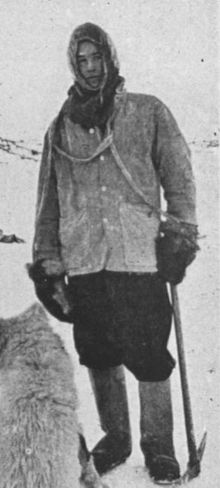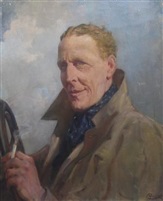
Brocklehurst Brothers
The third installment of WW1 Soldier Biographies written by Mid-Staffordshire Military Appeal Tribunals 1916-1918 volunteer Judith Gilbert, at Staffordshire Records Office, focuses on the ‘Brocklehurst’ brothers;sons of Sir Philip Lancaster and Annie Lee (nee Dewhurst) Brocklehurst of Swythamley Park, Macclesfield.
Brocklehurst; Sir; Philip Lee (1887-1975)
Sir Philip inherited the estate and became the second Baronet in 1904 representing Cambridge University at boxing in 1905, 1906 and 1907 in the lightweight category against Oxford and sparred against celebratory boxers. This brought him to the attention of Ernest Shackleton, who invited him to join the 1907-09 British Antarctic Expedition. He joined the Expedition in New Zealand after travelling First Class from the UK and detouring to watch the Test Match in Sydney.
The main aim of the Expedition was to reach the South Pole. This did not prove possible, but the party was the first to climb Mount Erebus and carried out geological surveys. Due to frostbite, resulting in the amputation of a big toe (which was preserved and brought back to London), Sir Philip did not reach the summit of Erebus, nor reach the southernmost extent of the Expedition, but his diary recorded a number of adventurous experiences. The party arrived back in New Zealand as heroes.
In 1914, Sir Philip planned to embark on Shackleton’s Trans Antarctic Expedition, but, instead, gained a commission in the 1st Life Guards and, in October 1914, sailed to France and Flanders. He had joined the Territorial Army in 1904 in the Derbyshire Yeomanry, promoted to Major in March 1916, and Colonel in 1924, the same rank as he achieved in the Life Guards.
After only 11 days in Belgium, Sir Philip was shot in the left shoulder and was hospitalised at Mrs Claude Watney’s Hospital for officers in London. After spending time at home, seeing his baby daughter, and a period of light duties, he re-joined his regiment in February 1915.
In September 1915, Sir Philip joined the 7th Signal Troop of the 1st Life Guards and remained with the cavalry regiment until 1918, when he transferred to the Egyptian Army (9th Sudanese Battalion), serving for two years as ‘Bimbashi’,in command of a post at Kereinik on the extreme western frontier, 200 miles from El Fasher. His account of a trip to Lake Chad in 1919, presented by him at the Royal Geographical Society, in 1922, led him to be considered for the Mount Everest expedition with Mallory and Irvine, but the frostbite injury ruled this out. Sir Philip remained in contact with Shackleton and other members of the British Antarctic Expedition throughout the 1920s. He also maintained his link with the 24th (The Derbyshire Yeomanry) Armoured Car Company, Royal Tank Corp (Territorial Army) from 1925 to 1932 Army Reserve.
He was gazetted Major and brevet Lieutenant Colonel in the Territorial Army reserve of officers on 7 May 1932, and he was a military member of the Derbyshire Territorial Army Association. He continued to enjoy hunting, he captained a local football team and became a keen motorist, taking the first car journey across the Sahara Desert in the 1930s. Source: Ice, Desert and the Staffordshire Moorlands (c2009)
Read more on Past Track
Brocklehurst; Sir; Henry Courtney (1888-1942)
Henry Courtney – known as “Courtney” – joined the 10th Royal Hussars (Prince of Wales’s Own) as a probationer on 8 January 1908 and the Regiment (B Squadron) on 18 March 1908 in Rawalpindi. He was Gazetted as Second Lieutenant on 8 January 1910, and then promoted to Lieutenant on 3 May 1911 and to Captain on 4 February 1915. Courtney represented the Regiment in a boxing tournament in Simla in 1908. He took an active interest in boxing even when not competing and donated the Brocklehurst Trophy to the King’s Royal Hussars. Courtney enjoyed game hunting in India between 1909 and 1912 and travelled to British East Africa with his brother in May 1910 for 3 months and to the Arctic Circle in May 1912.
While serving as a Lt. with the 10th Hussars, Courtney was invited to join Shackleton’s 1914 Imperial Trans-Antarctic Expedition. Leave was granted by the War Office, not on the basis of a secondment, but by Courtney being placed on the half-pay list, and he set off on the Endurance for Buenos Aires, but this appears to have been revoked, due to the outbreak of WW1. He arrived back in Southampton on 14 September 1914 and joined the 6th Cavalry Brigade on Salisbury Plan, transferring to Ostend on 8 October. From 17 September to 21 November 1914, Courtney served on the staff before returning to the 10th Hussars in Belgium just after the first battle of Ypres. He took part, in a dismounted role, in the Second Battle of Ypres in May 1915 and at Loos in September 1915. In 1916, the 10th Royal Hussars fought at the Battle of the Somme, all of the British Cavalry being mounted. They also performed a cavalry role in the capture of the village of Monchy le Preux, just east of Arras, when 189 soldiers were killed or wounded and over a thousand horses killed.
Like many cavalrymen, Courtney joined the Royal Flying Corps on 7 May 1917, following the request by General Haig that the number of squadrons be increased from 31 to 56. As a pilot, Courtney saw service in France, Tanganyika, probably in reconnaissance, and in Palestine, where, in 1917, German assistance had been given to the Turks at the Battles of Gaza, Amman and Megiddo. The Royal Flying Corps played a major and significant role in the destruction of the Turkish aim to hold Palestine. On 1 April 1918, the Corps became the Royal Air Force and Courtney remained with them as a pilot until 31 August.
Courtney had been appointed to Army Council on 16 September 1918 and deployed to Northern Russia. The Armistice was signed shortly after Shackleton’s arrival, but hostilities continued, with the Allies fighting the Bolsheviks and intending to train a local army, centred on Archangel and Murmansk, to defend a new government there. However, the Allies withdrew, leaving the area to the control of the Red Army. Courtney’s whereabouts were questioned until March 1919, when he applied to resign his commission in the 10th Royal Hussars stating his “willingness to join the Reserve of Officers.” This was accepted in September 1919. In 1921, Courtney was appointed to No.5 Cavalry in Bristol.
In 1922, he took up the post of Game Warden under the Sudan Government. He travelled extensively in Africa and, in 1931, wrote an authoritative handbook for hunters and was a fellow of London Zoological Society. During his time in Africa, Courtney took over Roaches House, originally Argyle Cottage, on the Swythamley Estate, south east of Hen Cloud in the Roaches, where he created a menagerie in which animals could roam across 80 acres. During the 1930s, Courtney worked undercover for the Secret Intelligence Service (SIS), and between 1934-5, he spent 5 months in China collecting natural history specimens
Due to his age, Courtney’s reserved status had ceased in 1938, but he applied to re-enrol on the outbreak of the Second World War and he maintained his link with British Intelligence. He became a member of Mission 101, a small part of soldiers that infiltrated into the Gojjam region of Ethiopia, aiming to contact and unite groups of insurgents attempting guerrilla type resistance to the occupying Italians. Courtney also worked for the SIS’s Section D, which worked within MI6 to devise and formulate plans by which an enemy country could by any means be adversely affected. Courtney was in Cairo in 1940 on a controversial mission – ‘The Brocklehurst Mission’ – seeking to win over the Gallas tribespeople, but this was opposed by the exiled Emperor Haile Selassie and the plan was withdrawn.
Courtney (now a Lt Colonel) also commanded a group belonging to one of three contingents of Mission 204, which arrived in Burma in September 1941, to train and run bands of Chinese guerrillas in special service operations against the Japanese. The USA was brought into the war by the bombing of Pearl Harbor in December 1941 and the aim of Mission 204 became the defence of Burma. Two contingents of the Mission were re-designated Special Service Detachments (SSD) and were placed under the command of the Burmese Army. Courtney was put in command of SSD2 and they were deployed to an area west of the Salween River to the north of Maymo. While they were away there were a number of developments in the attempts to slow the Japanese advance and the Allies retreated to Assam during May 1942. Courtney’s detachment was attempting to get back into India and was forced to split into smaller groups. Most were never seen again. Courtney is reported to have made a number of forays in search of food and boats, and it is believed that he was swept off a raft on the Chindwin River and lost. Only two of his small party survived.
Courtney’s body was never found, but his name appears on the War Memorial for Allied soldiers in Rangoon and this lists a grave “situated in Taukkyan, outside Yangon adjoining the village of Taukkyan”. In 1949, Courtney’s brother, Sir Philip, erected a memorial plaque to Lt Colonel Henry Courtney Brocklehurst on the Hanging Stone on the Roaches. Source: Ice, Desert and the Staffordshire Moorlands (c2009)
Read more on Past Track

